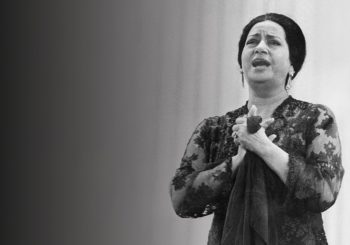
Over the centuries, Egypt has been home to many cultures and many civilizations, has housed religions and renegades, lovers and unlovables. As a result, Egypt has become a pinwheel of diversity, city names ranging from Latin to Arabic, Greek to English. Whether it’s a tongue of antiquity or one we still use today, Egypt remembers them all in the form of Cairo.
Cairo is both the capital of Egypt and its massive darling, with upwards of eight districts ranging from ancient to modern to postmodern. Each has a unique identity, a unique sense of self; Maadi is for the dreamers, the florists, the let’s-get-lost in peace. Mohandessin is a concrete jungle, fast-paced and merciless, a hub of noise and corporate-savvy.
But there’s always a little more to each of them.
There’s a name.

Ain Shams
Ain Shams is the most predictable on this list. Its meaning is “Eye of the Sun” in Arabic, as the district now sits atop one of antiquity’s most interesting locales: the ancient Heliopolis. Not to be confused with the modern city, the true Heliopolis was the spiritual epicenter for sun worship in ancient Egypt. Today, Ain Shams is one of Cairo’s oldest districts, containing a formidable number of historical sites.

El Manial
El Manial is a feat of both lyrical and industrial ingenuity; in Arabic, it means nilometer. The particular nilometer that runs through El Manial still stands, in full glory, alongside Manesterly Palace. Long before the Aswan dam, Egyptians “invented an instrument to measure the waters in order to predict the Nile’s behavior.” Nilometers were used as early as 5,000 years ago, and vary in kind. Only priests, Pharaohs, and later Arab and Roman leaders were allowed to oversee the construction and monitor the use of Nilometers.

Garden City
When Khedive Ismail became bent on Europeanizing Cairo, Garden City was born. Much like it’s name suggests, it draws most of its inspiration from foreign countries: with the tight, once cobbled streets that are reminiscent of Paris and Amsterdam, to the low buildings and English architecture. Its landscape, layout, and general atmosphere are a testament to the foreign architects who worked on its inception. Today, Garden City is considered one of Cairo’s sleepiest suburbs for the wealthy and resigned.

Heliopolis
Unlike Ain Shams, this Heliopolis has very little to do with the ancient city. Rather, its name – Heliopolis, meaning “City of the Sun” in Greek – is an homage to one of Egypt’s cornerstones of religious worship. Built in 1905 by Belgian industrialist Édouard Empain and by Boghos Nubar, son of the Egyptian Prime Minister Nubar Pasha, it is now Cairo’s bridge into more modern settlements. Among locals, Heliopolis is known as Misr El Gedida: New Egypt. It speaks to that connection between a once ancient city and its modern equivalent.

Maadi
Maadi is, much like Garden City, one of Egypt’s more undisturbed locations. It draws its name from the Lower Egyptian prehistoric culture, Buto Maadi. It’s credited to a suburb just north of the delta, where its namesake remains in the form of a Cairo district. The settlements in Lower Egypt are better preserved than their counterparts, which is largely why contemporary Maadi is famous for its intimate link to the past.
The culture resurfaced in waves with the Naqada I and II phases in upper Egypt, but the culture remains intimately tied to Maadi itself today – where it was most famously pursued.

Shubra
Shubra is an ironic name for one of Cairo’s largest districts. Shubra, derived from Coptic, was intended to mean small village or town. Although it was, back in at its inception, today Shubra is a notorious behemoth, padded with buildings and noise, a lively location that no Cairo resident can quite overlook on a list such as this one.







Comment (1)
[…] خلف اسم احياء القاهرة الست […]